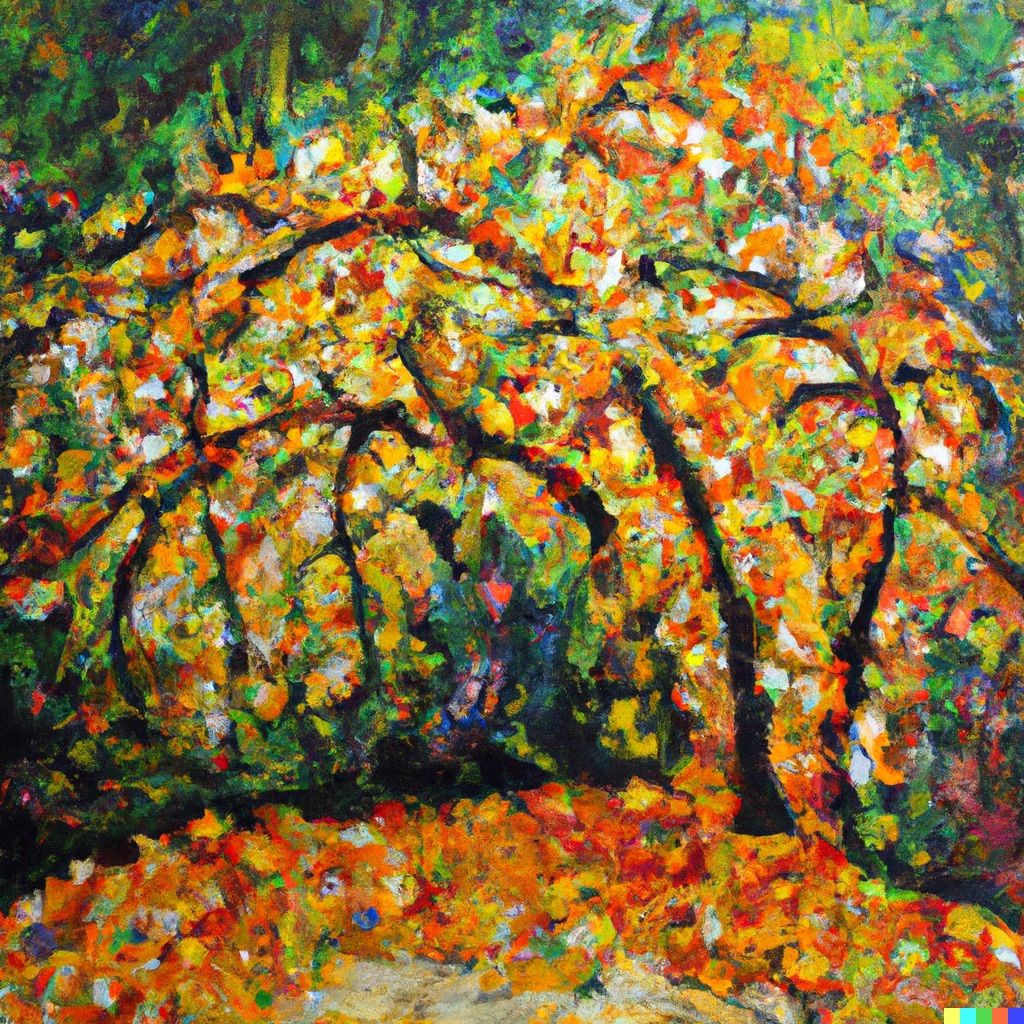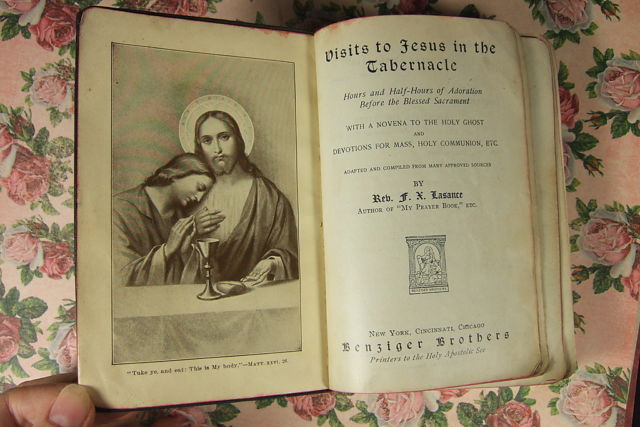Rough Initiations
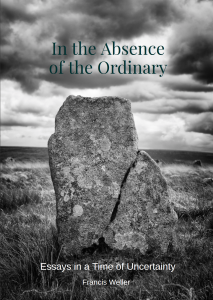
Editor’s note: Rough Initiations is the first chapter of In the Absence of the Ordinary, Francis Weller’s most recent book of essays. The book can be downloaded by donation. Also, in this edition of Kosmos, read a conversation between Francis Weller and Alnoor Ladha, part of a series titled, The Deschooling Dialogues.
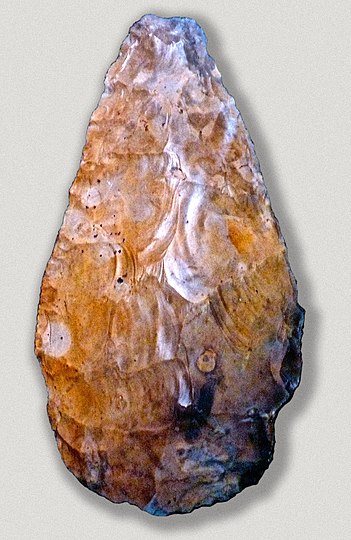
Several years ago, I wrote an article called “The Movements That Made Us Human,” in which I related an experience I had learning to flintknap; the making of arrow-heads and spear points from stone. In the process of learning this ancient skill, a body memory flickered into my awareness: we have been making this gesture, this exact movement of lifting stone above our heads and striking down on stone for over 1,000,000 years. This movement, along with others, such as making fire, cordage, tracking game, basket making, communal rituals, initiation and storytelling are what slowly gave shape to our psychic and communal lives. We have made these movements generation upon generation and now, in the barest wisp of a moment, we have stopped. What happens to our psyches, to our very beings, in the absence of these movements? What happens to our cultures in the absence of these sturdy and reliable rhythms?
It appears entire areas of our nature remain inactivated. By extension, entire areas of the commons of right relations and good manners with the living world are also missing. These movements were highly engaged with the surrounding world: gathering plants for baskets and cordage; tracking deer, bison and antelope; tending the passages from youth into adulthood through sacred initiations; all were done with an attitude of reference. By silencing these movements, a distinct language of intimacy with the enveloping world has been lost. This strikes a profound note in the collective hum of grief.
One of the essential movements that made us human was our ability to hold one another in times of grief and trauma. This skill has, for the most part, been lost under the extreme weight of individualism and privatization. This has had a profound impact on how we process and metabolize our personal encounters with loss and intense emotional experiences. Without the familiar and reliable container of community and family, these times can penetrate our psychic lives in a shattering way, leaving us shaken, frightened and unsure of our next footstep. This is the experience of trauma. Trauma is any encounter, acute or prolonged, that overwhelms the capacity of the psyche to process the experience. In these times, what confronts us is too intense to hold, integrate or comprehend. The emotional charge that arises saturates our capacity to make sense of the experience, and we become overwhelmed and alone.
We’ve all become familiar with the term PTSD. (Post-Traumatic Stress Disorder) We hear stories of veterans returning from war carrying the violence they experienced and witnessed within them. Victims of natural disasters, car accidents, school shootings, rape, or the sudden death of someone we love, are all forms of acute trauma.
There are other forms of trauma as well. Trauma can also arise in our psyches, not so much from an event, but through erosion; the slow wearing away of the sense of trust, security and worth through prolonged exposure to neglect, abandonment or shaming. This is what is called Developmental Trauma or what I call, Slow Trauma.
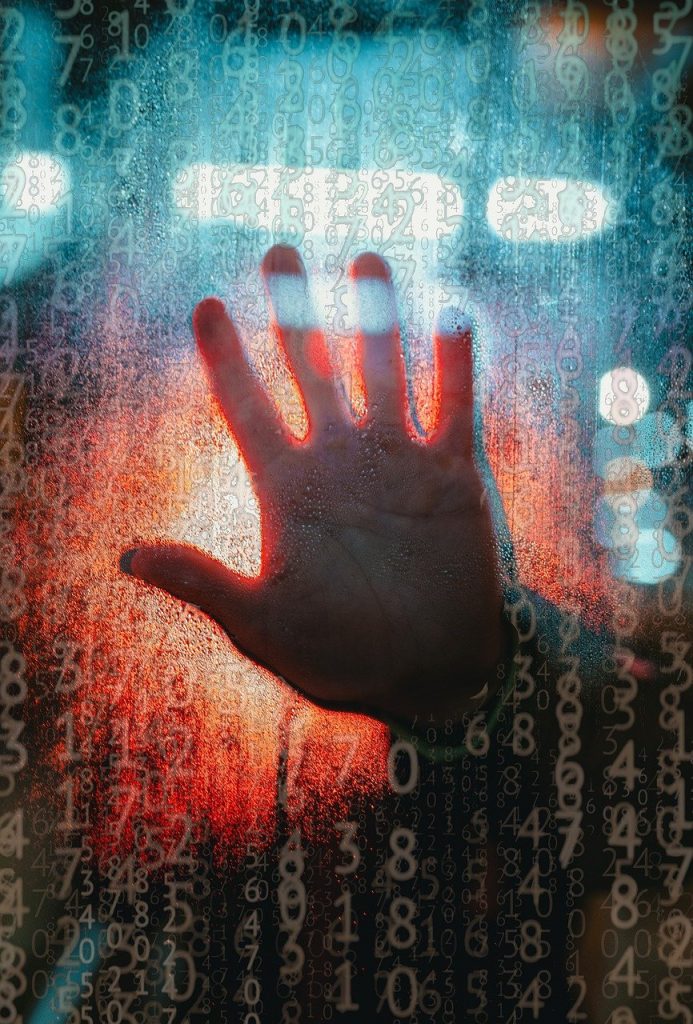 What makes an experience traumatic, in addition to the pain of the encounter, is the absence of an adequate holding environment capable of supporting us in these times. “Pain is not pathology,” as Mark Epstein noted in his book, The Trauma of Everyday Life. The pathology emerges from the isolation that all too often surrounds our experience. What we needed in these times were attuned and attentive individuals who could sense the distress we were experiencing and offer us assurance, soothing and safe touch to help us re-modulate our inner states. The holding environment is a form of ritual ground, within which we can pour our grief, fear, and pain and trust that it will be held.
What makes an experience traumatic, in addition to the pain of the encounter, is the absence of an adequate holding environment capable of supporting us in these times. “Pain is not pathology,” as Mark Epstein noted in his book, The Trauma of Everyday Life. The pathology emerges from the isolation that all too often surrounds our experience. What we needed in these times were attuned and attentive individuals who could sense the distress we were experiencing and offer us assurance, soothing and safe touch to help us re-modulate our inner states. The holding environment is a form of ritual ground, within which we can pour our grief, fear, and pain and trust that it will be held.
Trauma is inherent in being human. From suffering and loss, to broken hearts and betrayals, we will all encounter many moments of trauma. In the absence of the village—which was the original holding environment—these times settle like sediment in our beings, taking on a feeling of over-whelm and frequently of shame. It is as if we intuitively know that someone should have responded to our distress, and when they didn’t show up, the thought fell on us like ash that it must be because of our unworthiness. It confirms our lack of welcome and belonging, reinforcing our isolation and exile.
In my work as a psychotherapist, I have seen many people who were experiencing circumstances that profoundly affected their lives—life-threatening illnesses, the lingering effects of neglect in childhood, violations to body and soul through rape or molestation or the haunting remains of war. In their stories I began to see the parallels between their traumatic experience and traditional initiation. I began to call their experiences “rough initiations” to provide a greater context for their experiences. Offering this wider lens with which to perceive their experience, helped to broaden their ability to hold their wounds with compassion and mercy.
In any genuine initiatory experience and in all truly traumatic events, the following circumstances occur:
– The individual is ushered into an alternate reality, outside consensus reality.
– There is a radical alteration in the sense of self.
– There is a realization that nothing will ever be the same. There is no going back to the old life. We are meant to be radically changed by the encounter.
Traditional initiation occurred outside the familiar landscape of family and friends, the daily rounds of meals and work. It occurred in a time outside time. What was known and accustomed was left behind as the initiate entered a strange and unpredictable world while simultaneously being held within the sacred container of the community. For the cancer patient, the soldier, the victim of rape, or the child of neglect, the world takes on new hues, colored by the wash of pain and terror that accompanies their experience. They too, have entered an alternate reality, yet one devoid of the sacred container of ritual and village. In this unfamiliar and often frightening terrain, they encounter the unraveling of the known existence.
Ritual initiation radically reshapes our sense of self. It is meant to break us open to the widest possible experience in identity. This shift in identity shows itself in times of trauma as well. I hear the phrase, “I don’t know who I am anymore,” every time I meet with the participants in the Cancer Help Program. The same is true for other forms of trauma as well, shaking them to the core, greatly reducing the arc of identity.
In an ideal situation, identity slowly emerges from the rich loom of inner and outer threads, woven together to craft something unique and beautiful. Until the age of initiation, the coalescing self is meant to be sheltered and protected and allowed to burrow deep into the womb of family and village. This identity, however, is not large enough to contain the wild edge of the soul’s calling or the demands of the daimon. When the safety of the familiar confronts the yearnings of the soul, it is time for initiation. It is a time of disruption and eruption as the demands of the soul make themselves known. It is at this point that the elders recognized the need to end the life of the youth, as they knew it, and ritually escort them across the threshold into a new sense of self.
Trauma enacts the same shifts in identity, often without the guidance, witnessing and containment of the village. This freefall experience can leave us feeling as though we have little sense of who we are any longer. And now, no matter how hard we try, we can’t put the pieces together again. We cannot go back to how things were before the cancer diagnosis, the accident, the war, the hurricane, the death of our child: Nothing will ever be the same and too often, we are asked to carry it alone, in silence.
Initiates were often put through a series of intense ordeals such as prolonged fasting, being buried overnight, or dancing for hours until the body collapsed from exhaustion. Death is ever present during initiation, signaling to the initiate the gravity of the moment. These ordeals dislodge the current sense of self and radically reshapes it through encounters with vastly larger energies. No amount of personal strength or control can outlast the conditions that are evoked by the ritual process of initiation. Only by releasing the old forms will something possibly emerge on the other side. The initiate, in a very real sense, dies and is rebirthed at the end of this process into a wider cosmological story and identity. They have died to the solely personal and have entered the sacred dimension of mythic life.
In the indigenous context, initiation was never meant for the individual. It had nothing to do with personal growth or self-improvement. It was an act of sacrifice on behalf of the greater community into which the initiate was brought and to which they now hold allegiance. They were being made ready to step into their place of maintaining the vitality and well-being of the village, the clan, the watershed, the ancestors and spirit. It was never about them, but about the continuum of generations to come.
This thought is very difficult for us to digest in our highly personalized/psychologizing way of thinking and perceiving. It is always about us—our wounds, our growth—which keeps us at the center of the wheel. Traditional initiation, in contrast, breaks us into a wider and more inclusive experience of self. We become part canyon, part Meadowlark, part cloud bank, part village. We are made porous through these profoundly deranging experiences, broken open to allow ourselves to be penetrated by the holiness that pervades all things. Through this communion, we feel our kinship with the singing, breathing world/cosmos. We become immense and connected to the whole. We fall in love with the world and learn to protect what we love.
I call initiation, a contained encounter with death. Martin Prechtel said those, “who don’t fight death in adolescence, are destined to live in a walking death.” This failure to confront death during initiation, dooms many of us to become agents of death, eating life wherever we go. Any sideways glance at our culture reveals a massively consumptive, parasitic energy, feeding off the life force of the planet. Restoring rituals of initiation is at the heart of any meaningful cultural change.
Trauma, in contrast, is an uncontained encounter with death. Few, if any, of the conditions needed to meaningfully process the trauma were present. We felt naked and exposed to the bitter winds of neglect or violence. Our internal environment shifted and rearranged itself in our attempts to mediate these extreme states. We withdrew from the world, found substances that eased our distress, sought security from anyone we could convince to enter our emptiness. We established sentinels at the periphery of awareness to keep us safe and always kept a vigilant watch. We were reshaped by these traumatic times. It became difficult to regulate our inner worlds, which could be suddenly tossed about by any event in our life.
I know in my own life, how the neglect and violence I experienced made me wary and distrusting of love, certain that it was fleeting at best and certain to disappoint. I leaned heavily on distraction and dissociation to remain at a safe distance from my pain and grief. Eventually, however, the soul finds cracks in the floor and brings to the surface what we attempted to bury, all in hopes of completing the initiation that remained latent in the trauma.
The German word for trauma is “Seelenerschütterung,” which means soul shaking. This feels more alive than the clinical word, trauma. We are shaken in times of trauma, disoriented, and disjointed. Ed Tick, author of War and the Soul wrote that, “The Hopi people called trauma, tsawana, meaning, ‘a state of mind in terror,’’ and “The Lakota called trauma nagi napayape, meaning, ‘the spirits leave him.’” Trauma enters our beings at profoundly deep levels, not unlike the conditions of initiation. However, without the mediating conditions that contained traditional initiation processes, these experiences leave us shattered and alone—the exact other end of the spectrum that accompanies initiation. While initiation breaks us open to the widest possible aperture of inclusion in connection to the breathing cosmos, trauma isolates us and fragments us into the smallest imaginable hub of existence. One man I worked with shared how his goal was to live at or below zero; to take up no room in the world since he had no right to be here.
Trauma leaves us thinned and exhausted. Strategies of survival consume much of our life energy. The condition that befalls us following trauma resembles in a powerful way what traditional cultures called soul loss. This was the most feared condition to indigenous people. It led to a flattened world, disenchanted and emptied of vitality, joy, and passion. Relations with the living, singing world were silenced in this condition, leaving one stranded in a deadened world.
Soul loss is experienced as a depletion in our vital essence, leading to a decreased sense of potency and power. In mythological imagery, we have entered the wasteland. Here, images appear in dreams of ghettos and prisons, ragged orphans and barren stretches of empty buildings. Psychologically we call this depression, but to the indigenous soul, depression is the symptom, not the illness. The illness is soul loss and that is not amenable to medication.
To heal from our traumas, from soul loss, we must restore the conditions which offer something alluring and compelling to coax the soul back home. In other words, what reconstitutes the psyche after trauma, in addition to understanding what happened, is reestablishing our place within the wider cosmological context. We must be restored and re-storied to complete the rough initiation that was precipitated by the trauma. In other words, we must return to our lives as vital and engaged participants in the deep song of the world.
For many years, I had the honor of leading the Men of Spirit initiation process; a year-long intensive rite of passage. What I began to understand from the work we were doing and from studying initiations in other cultures, is that a certain set of variables must be in place to contain the encounter with death and make the transition possible from youth to adult. These same conditions are what help us restore the psyche after trauma.
- It requires a certain context: Community Initiation is meaningless outside of the village. We need something to serve: We do this for the sake thereof. In other words, initiation was not meant for the sake of the individual; it was done for the welfare of the greater circle to which they belong. Initiates returned to the village, the community or tribe, as newly created members of the wider cosmos. They were now authorized to participate in the care and maintenance of the community. Similarly, a traumatized individual needs to feel the arms of the community holding them in their extreme condition. Through the eyes and hearts of the circle, the violated soul can begin to feel the resonance that is available to them inviting them home.
- It requires a certain energetic: Ritual Ritual is a highly focused process that provides sufficient heat to cook the soul. The gestures, which are unique to each culture, are guided by ritual elders. Ritual invites the potential for derangement—the process of shaking us out of the agreed-upon constructs of family/culture and into a larger, soul-based sense of living. The community requires potent adults who are guardians of their own sovereignty.
- It requires a certain vibration: The Sacred Ritual opens us to the Mystery, the invisible world of the sacred. Initiation without the engagement of the sacred fails to open us to our expanded sense of identity. It requires invisible allies and energies to help us slip off the coat of our small lives. This happens, as poet Rainer Maria Rilke said, by “being defeated decisively by constantly greater beings.”
- It requires a certain spaciousness: Time Many initiatory processes last six weeks to six months out in the bush. During this prolonged time, all ties to the familiar are broken and you enter the cocoon of your own disappear-ance. This takes time. This alternative rhythm enables the psyche to let go of the conditioned cadence that accom-panies daily life. We need to slip into soul time, “geologic time,” as my mentor Clarke Berry called it.
- It requires a certain terrain: Place Initiation occurs in place, a geography with familiar hills, caves, trees and rivers. Traditionally, mythic places where the old ones gave shape to the landscape, were the grounds upon which the initiates were taken, providing an ancestral root to their own experiences. Now watersheds, a bioregion particular to your being, are the terrain into which we are invited. We are initiated into place as surely as we are into our communities. Place is very particular. We can see this today where indigenous people are fighting to the death to protect their lands from oil and mining companies. To these traditional people self and land are one.
When these five elements are woven together, the container is fortified, and we are able to cross the threshold and enter our own adult lives with the capacities of honoring life and feeding the soul of the world. These primary constituents help to stabilize the internal movements of self-attunement, self-regulation and our capacity to more readily hold steady in our adult life. We begin to suture the tears in our coat of belonging.
A recent study of Native American and non-native American soldiers returning from Afghanistan and Iraq was revealing. It showed that the soldiers who only participated in conventional PTSD treatments, had a 40% success rate for the treatment. However, those soldiers who participated in traditional Native practices such as sweat lodges, pipe ceremonies and vision quests, had a 70 to 80% success rate in recovering from their symptoms. The difference being the restoration of the cosmological ground—the soldiers returned to the larger field of belonging. To the indigenous mind, it is impossible to separate body, mind, soul, and spirit. Any approach to healing must include all these aspects of our being. What is worth noting, is that when non-native soldiers were put through the same rituals, they also experienced an increase in recovery.
Laurens van der Post, speaking of Carl Jung, said:
Healing without a quickening of religion, as he put it to me, was “just not on.” He was back at the moment far in time when the word “heal” formed itself first on the lips of living men, and to heal meant to “make whole,” and the word whole and the word holy are both derived from “heal” to describe an invisible concept of life, so that in the beginning, as in this hour, so much later than we think, the condition of wholeness and holiness are synonymous.
Healing trauma requires a restoration of the matrix of life. When we return to the original ground of our belonging, we come home and remember who we are, where we belong, and what is sacred.




